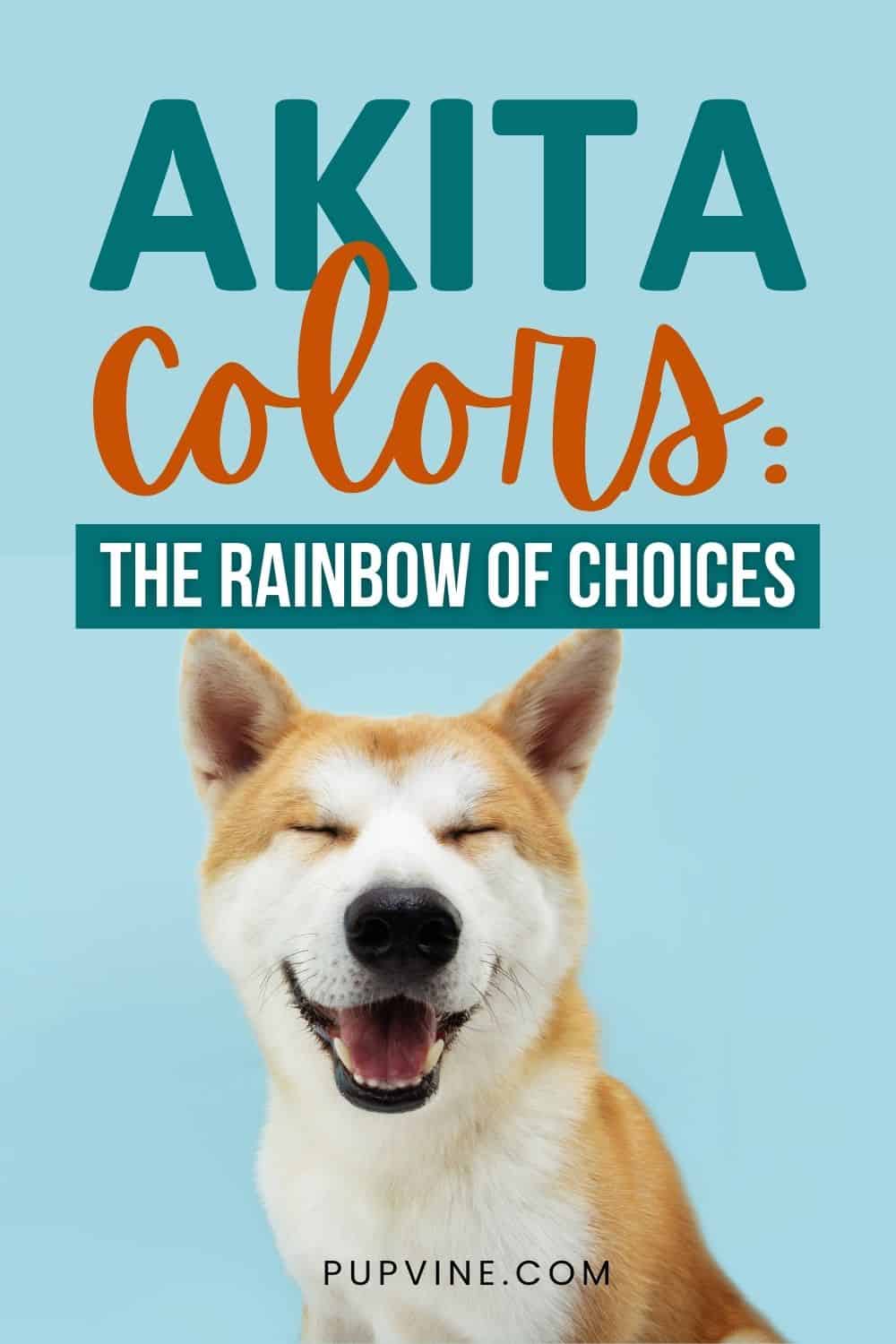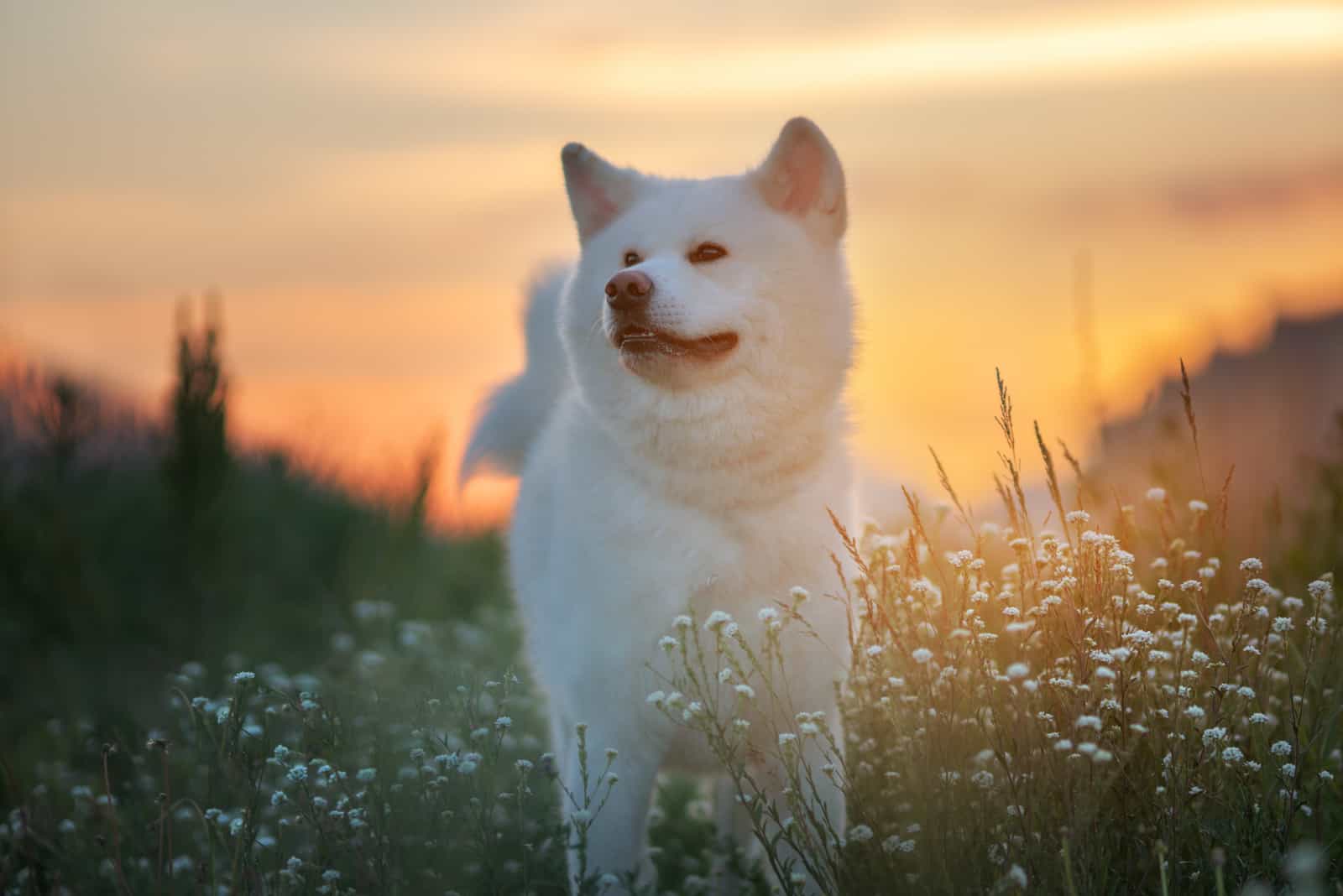Akita colors and patterns are really something wonderful. There’s an Akita for everyone; from dark brown coat color lovers to the lightest shades possible. You just gotta love them all!
Ever since they’ve established themselves as natural guardians, Akitas have been one of the favorite dog breeds to own, both the American and Japanese Akita Inu. These spitz dogs come from northern Japan, but they’ve come a long way from hunting wild boar to keeping company to people all over the world.
These mighty dogs resemble their fellow mastiffs with their size and dominant stand, but honestly, they’re the sweetest if you train them well.
Which colors are available? What types of coats do Akitas sport? How do you tell the differences between an American and a Japanese Akita Inu? Keep reading and you’ll become an Akita expert!
What Is An Akita?
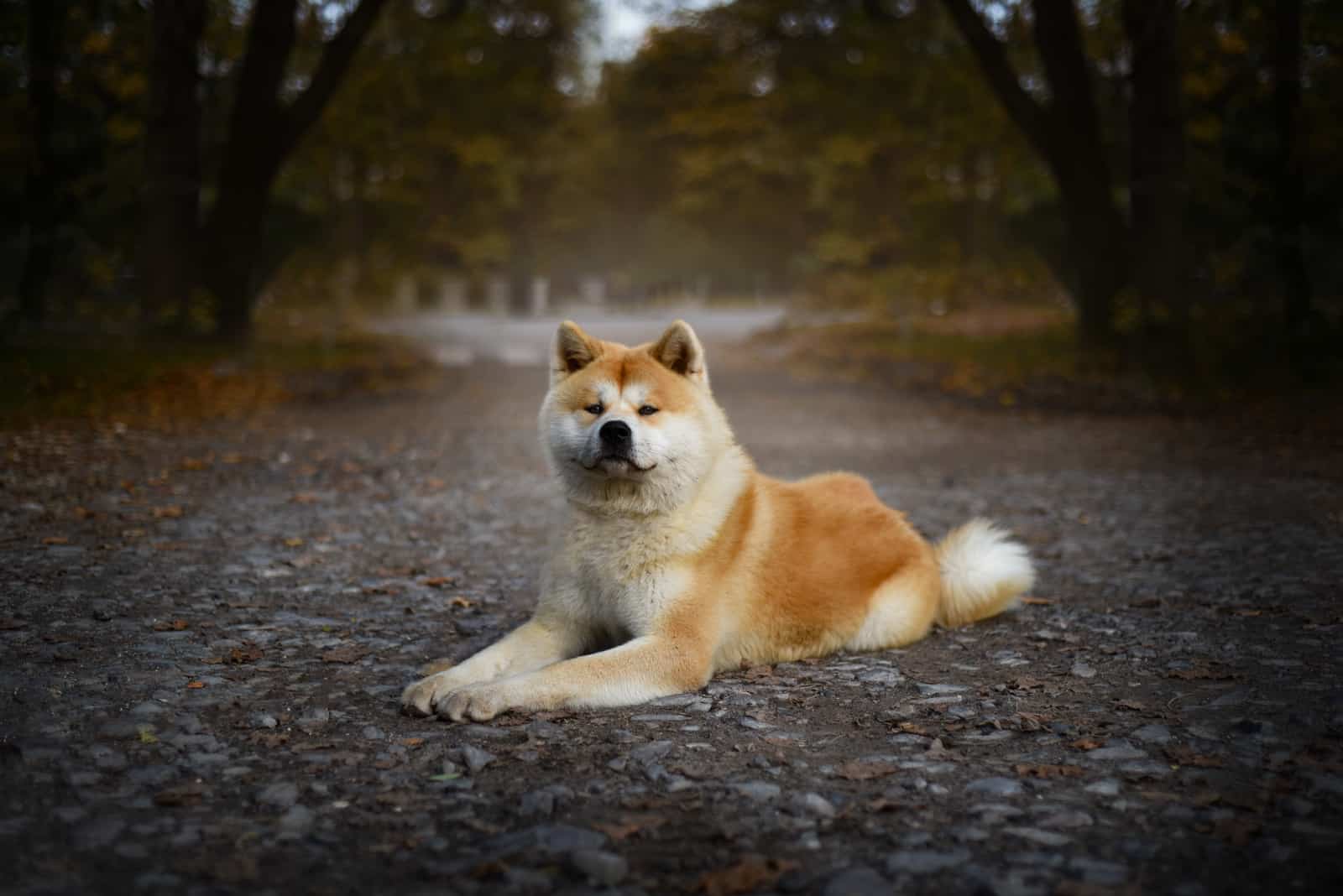
Akita Inu is originally from Japan, just like the other popular dog breed, the Shiba Inu. But, these two dogs, even though they have many similarities, are quite different. An Akita is a large dog breed bred for hunting bigger game than Shiba Inus.
Although Akitas were quite popular with Japan’s high society, it was an exiled nobleman who designed this dog breed.
Akitas are huge symbols to Japanese people serving as instinctive protectors. It’s a tradition to give an Akita figurine to a newborn to bring happiness and health.
The arrival of the western breeds in the Asian country polluted the Akita’s pure bloodline. Also, World War II negatively impacted the number of Akita dogs. However, they rebounded in the second half of the 20th century.
There are two types of Akitas. The original is the Japanese Akita breed, which is a separate one from American standard Akitas. The weights and sizes are different as well as some other traits, i.e., the American standard allows a black mask, while the Japanese standard doesn’t allow a black mask.
According to the FCI, Japan and many other countries consider the American Akita as a separate dog breed from the Akita Inu or Japanese Akita. Both the United States and Canada consider the American Akita and the Akita Inu as a single breed with differences in type.
Akita dogs are docile, smart, brave, and fearless. They’re good family members, careful and affectionate.
Akitas need a firm hand when going through training. The objective of training must be to establish yourself as the pack leader. Otherwise, your Akita might feel like he’s in charge, and that will result in unwanted behavior. If you want a well-behaved adult dog, you need to start with the training as soon as you get your puppy.
Akitas are top-notch guard dogs. Fun fact: Japanese mothers used to leave their children with Akitas to take care of them. These dogs are faithful, but should never be left unattended with kids and small animals if they’re not trained.
Also, children must learn to respect the Akita and to never tease this dog.
With the right owner, proper training, and daily exercise, an Akita can be the ideal family dog.
Still, always remember that obedience training takes time and lots of patience. Since they’re quite smart, Akitas can become bored easily, so make sure you have some interesting toys for them to play with.
Akita Coat Types
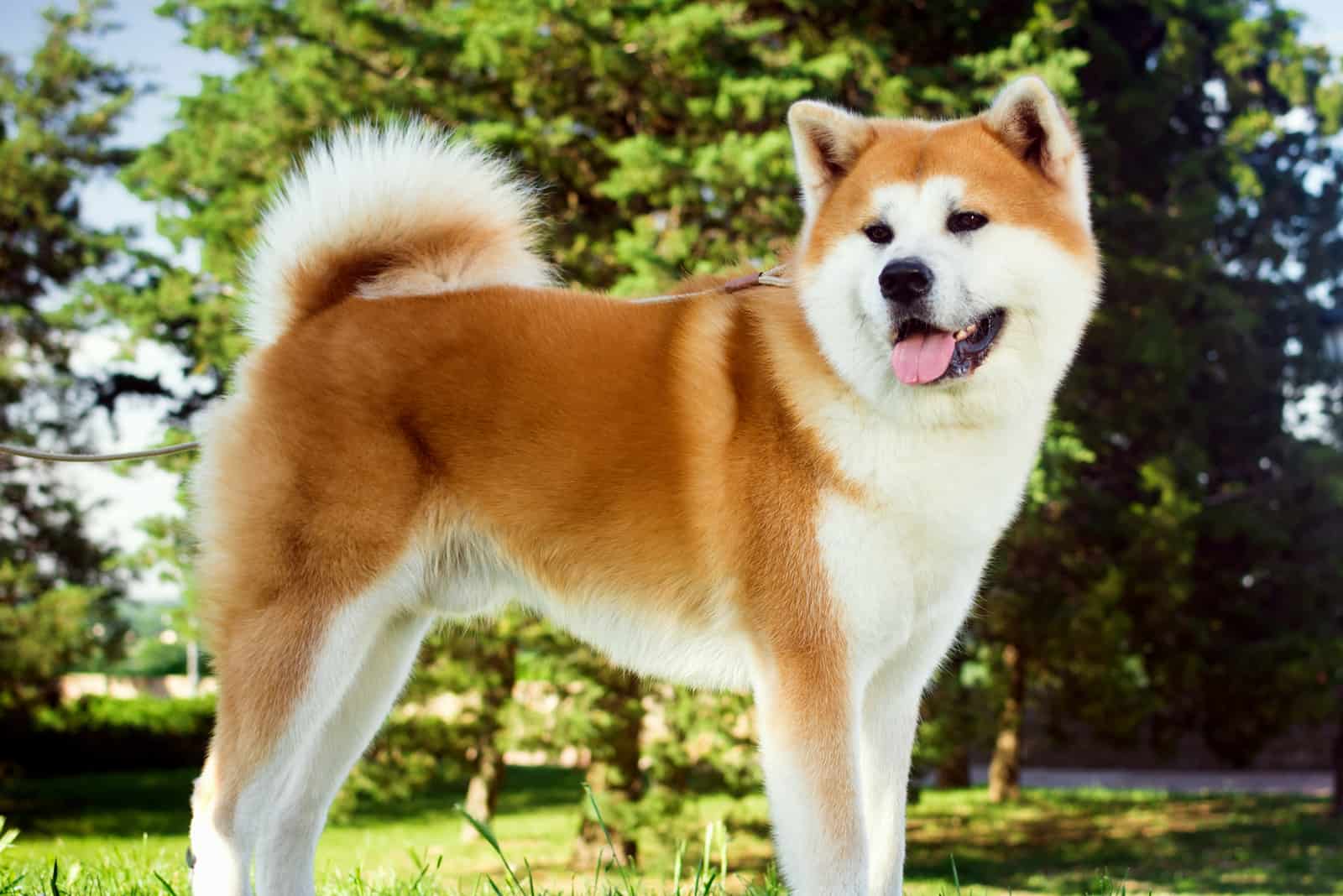
Akitas have a double coat with a dense and plush undercoat and a short topcoat.
Even though they look fluffy and high-maintenance, Akitas are actually easy to groom. Sure, they do shed a lot, so frequent vacuuming and cleaning is a must. But, the heavy shedding season strikes only twice a year. What helps a lot with controlling the dust bunnies is frequent brushing once a week. Also, it keeps the dog’s coat healthy and shiny.
Despite its good self-grooming habits, an Akita needs bathing every three months. Of course, if your dog gets dirty easily, then bathing it more often is absolutely okay. However, you should know that there are some grooming tasks you shouldn’t skip on.
Nails should be trimmed once a month. Ears should be checked once a week and cleaned by using a cotton ball dampened with a pH-balanced ear cleaner.
If you start grooming from an early age, you’ll get your Akita accustomed to being groomed in its later years. Grooming is a soothing and positive experience. Both you and your Akita should enjoy it.
Japanese Akita
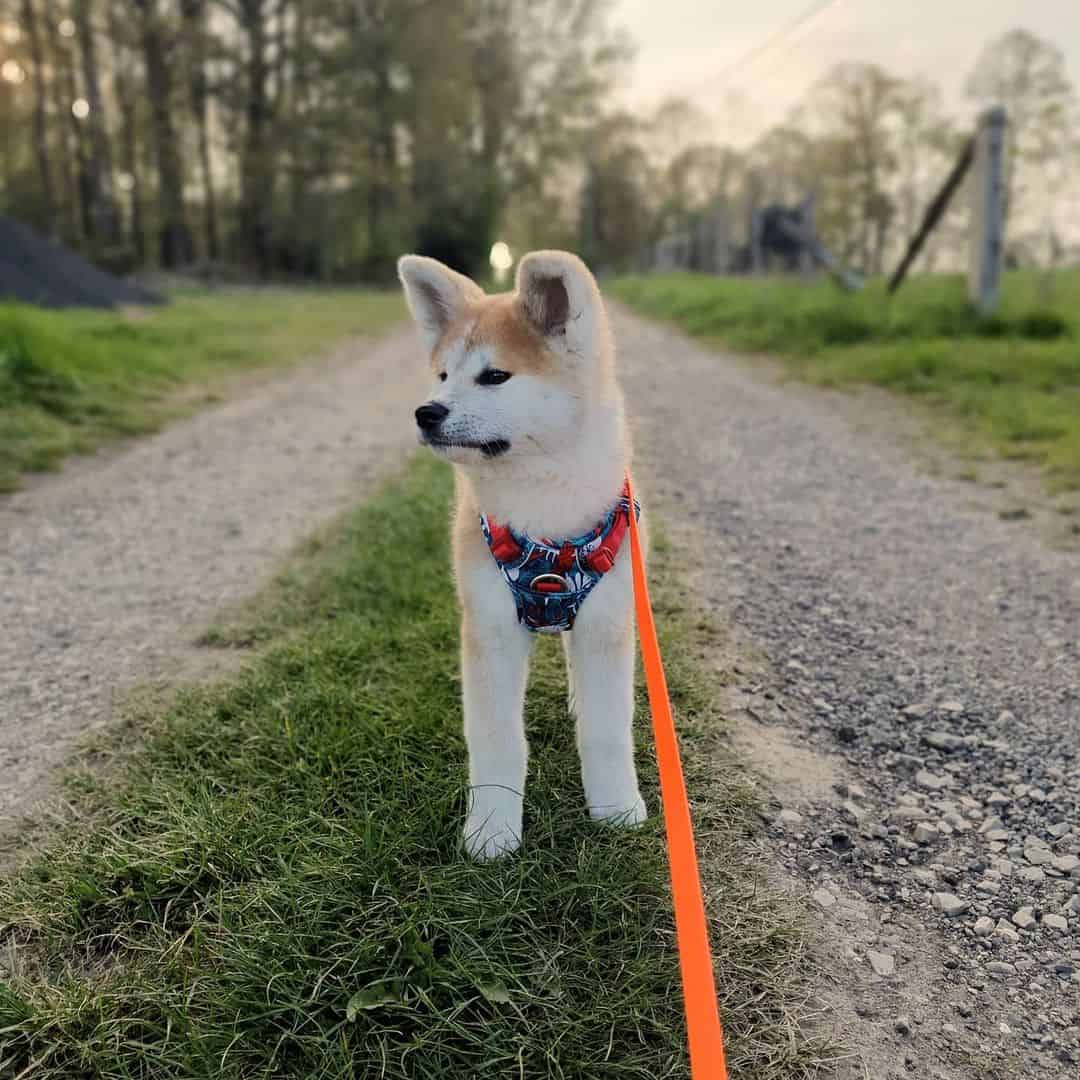
Photo from: @soy.no.kazoku
The Japanese Akita is also known as the Akita Inu. These are strictly purebred Akita dogs, unlike other Akita mixes that have been bred with western dogs, like the German Shepherd.
Japanese Akita is a smaller dog than the American Akita. They don’t have such muscular bodies, and their appearance isn’t similar to a fox.
The Japanese Akita has a withers height of between 23 and 25 inches, and a weight of between 65 and 120 pounds.
Akita Inu dogs have brown and almond-shaped eyes, and their ears are triangular and sit a little forward.
American Akita
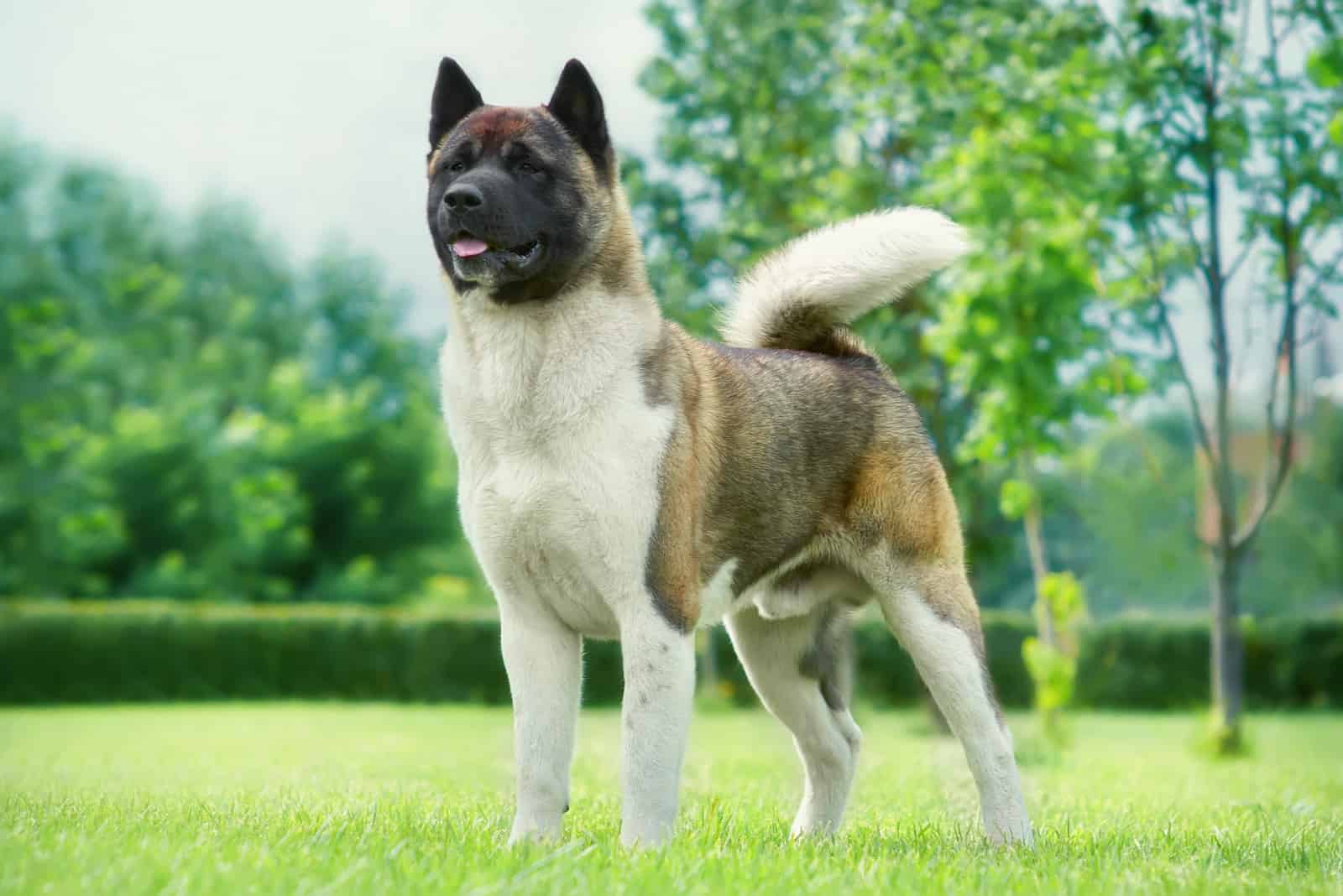
When Helen Keller visited Japan in 1937, she was so amazed by the Akita Inu breed and the popular Hachiko that the Japanese government presented her two Akita dogs, two brothers. Keller took them back to the United States, and this is how the Akita Inu was introduced to America.
Shortly afterward, the breed standard was laid out for the Akita breed by the first Akita club. However, the American Kennel Club (AKC) did not recognize the breed until 1972.
The American Akita has a bear-like appearance with a powerful body and a muscular frame. This makes it the perfect candidate for a guard dog.
The American Akita has a withers height of around 24 to 26 inches, and a weight of around 70 to 130 pounds.
American Akitas have triangular ears that sit erect and give them an alert look. Their eyes are small, deep-set, and brown.
Japanese Akita Colors
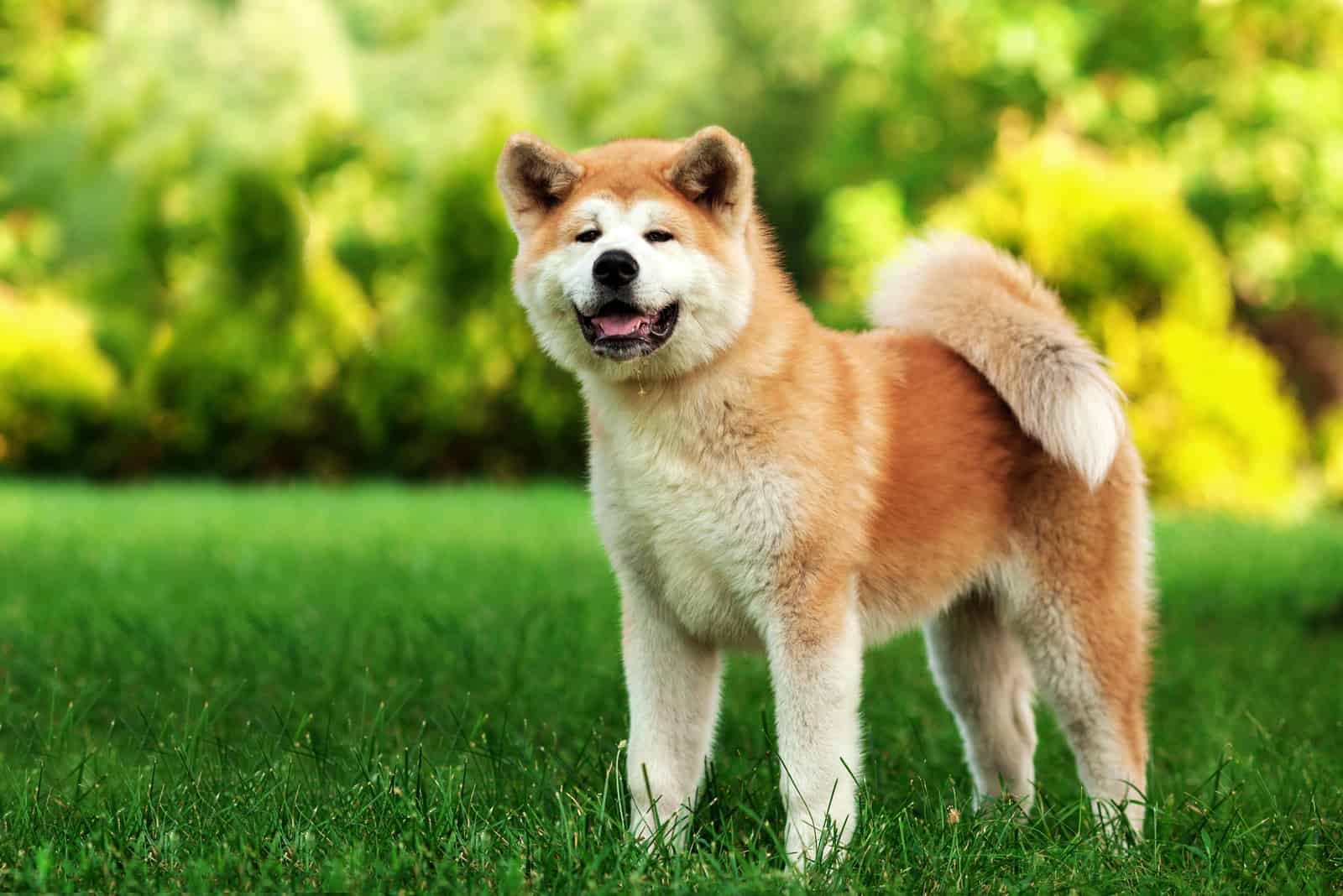
Japanese Akita can come in the following colors:
• red fawn
• sesame (red fawn with black tips),
• brindle
• white
The Kennel Club in England states that all varieties of the Akita Inu should have urajiro markings, apart from the white Akita Inu.
Urajiro is actually a cream to the white color you can find on some dog breeds like Akitas and Shiba Inus. These markings can be found on the sides of the muzzle, on the cheeks, on the undersides of the jaw, neck, chest, body, and tail, and inside of the legs. The AKC says that the urajiro markings could be less visible on brindle Akita Inus, where they may be a grey-frosted overlay of the main coat color.
These urajiro markings should blend in the main color of the Akita Inu.
If you’re planning to enroll your Akita Inu in dog conformations, you should know that white markings on the main body are frowned upon.
Red Fawn Akita
The red fawn Akita is the most common coat color of Japanese Akitas. You’ve probably seen it everywhere; the red fawn Akita is the Akita we all think of.
Sesame Akita
When we talk about Sesame Akitas, we talk about red dogs with black tips on their hair. Tipping is usually light and even on the body and the head, without any concentration of black in any specific area. Sesame areas appear to be at least one-half red.
Brindle Akita
Brindling is a specific pattern that represents black stripes on a solid base background. These stripes often resemble tiger stripes.
Red brindles have black stripes on a red background or red stripes on a black background.
White Akita
Japanese Akitas can come in white, but they shouldn’t have any other color or marking on their body. Pure white Akitas are not albino dogs since they do have pigment. Albinism is a genetic condition in which the dog lacks pigment.
American Akita Colors
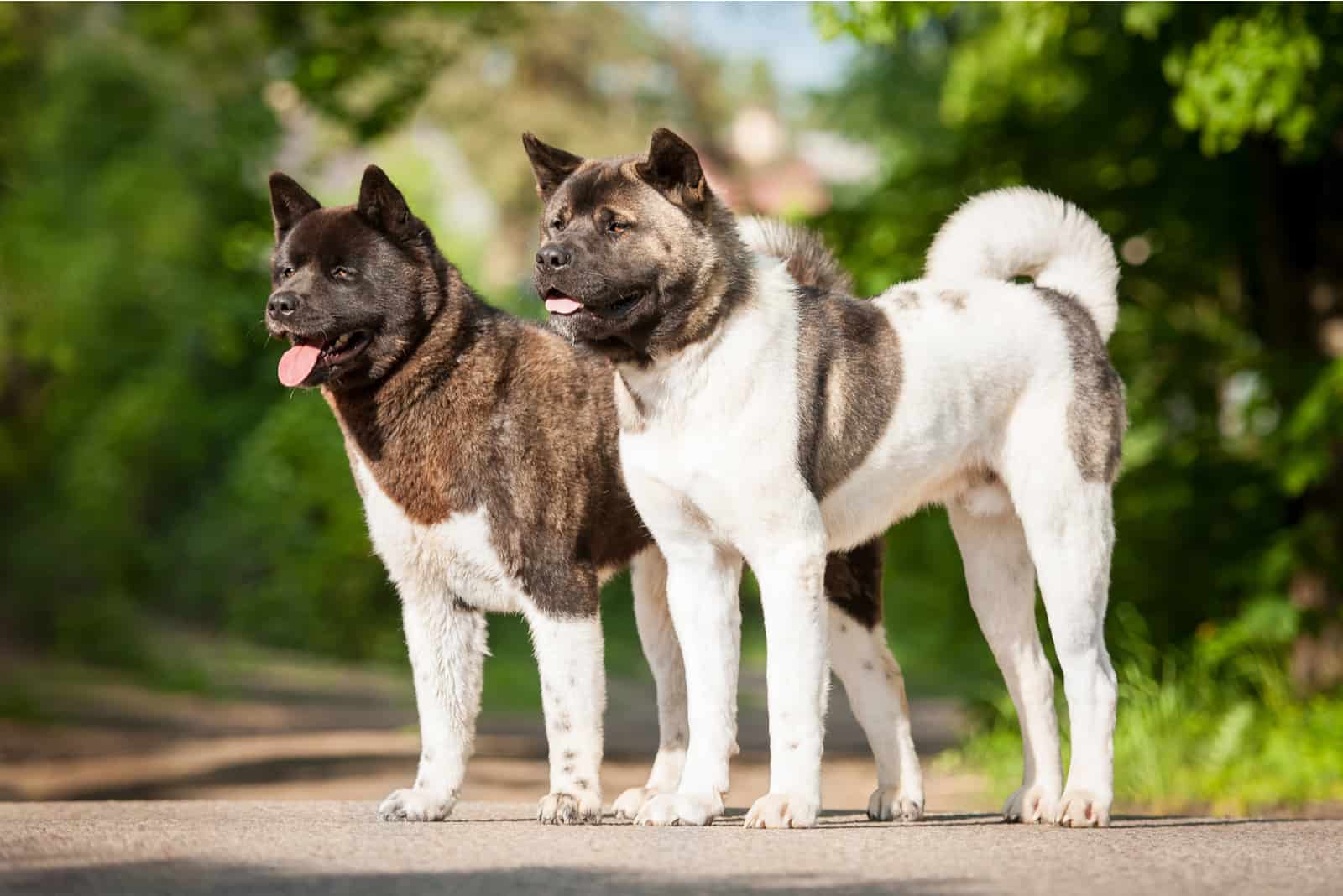
The American Akita has a wider spectrum of colors compared to the Japanese Akita.
The American Kennel Club has set the Akita’s coat color in their breed standard: any color, including white, brindle, and pinto, is acceptable.
American Akita colors are rich, brilliant, and clear. They have well-balanced markings with or without a mask or blaze. White Akitas have no mask. Pinto Akitas have a white background with large, even patches covering the head and more than one-third of the body.
Their undercoat may have a different color than the outer coat.
The most common coat colors in American Akitas are pinto and white.
Black Akita Inu
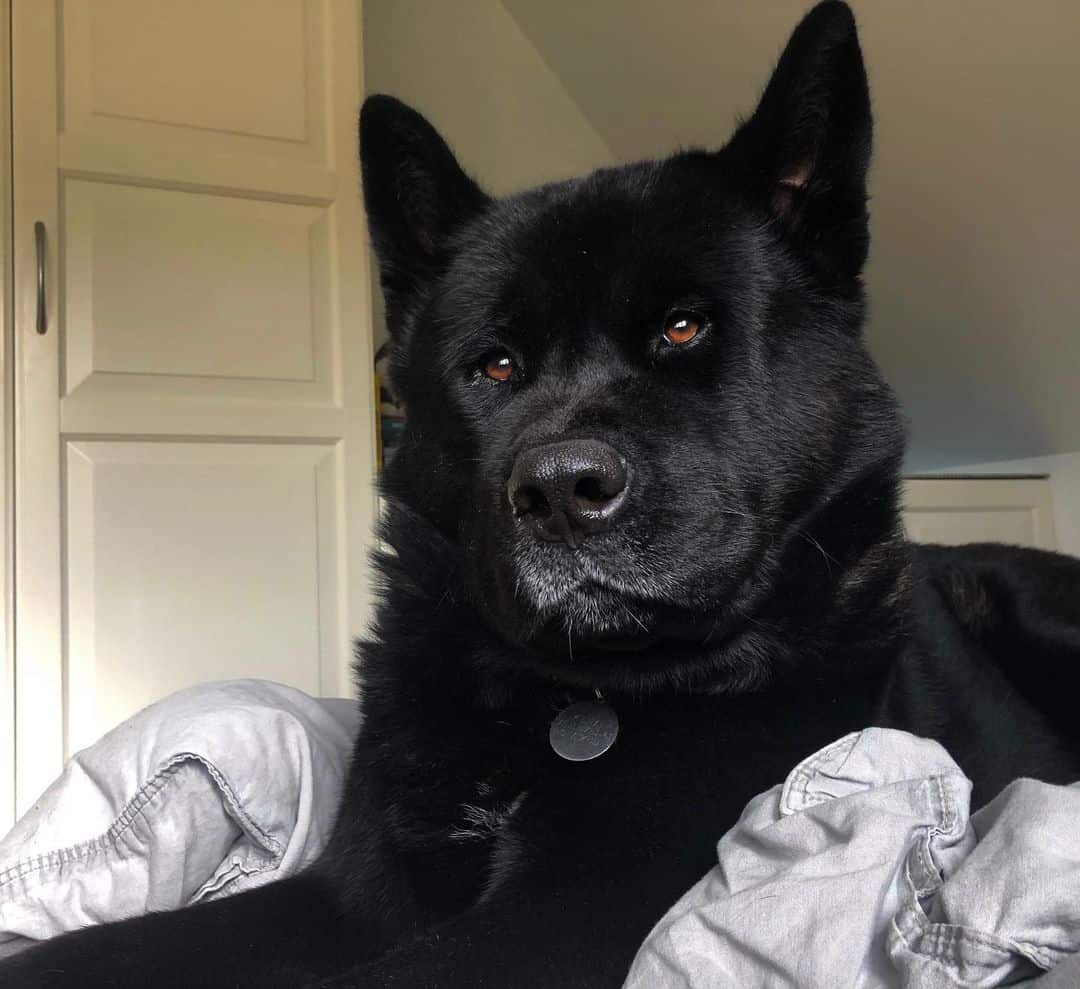
Photo from: @kenaitheamericanakita
According to the Kennel Club’s breed standard, black is not an acceptable color for the Japanese Akita. However, American Akitas do come in black. Black is actually a rare coat color. In most cases, it’s only some shading or the undercoat that is a different color. Most Akitas have some shading on the outer or undercoat.
Akita Colors And Patterns
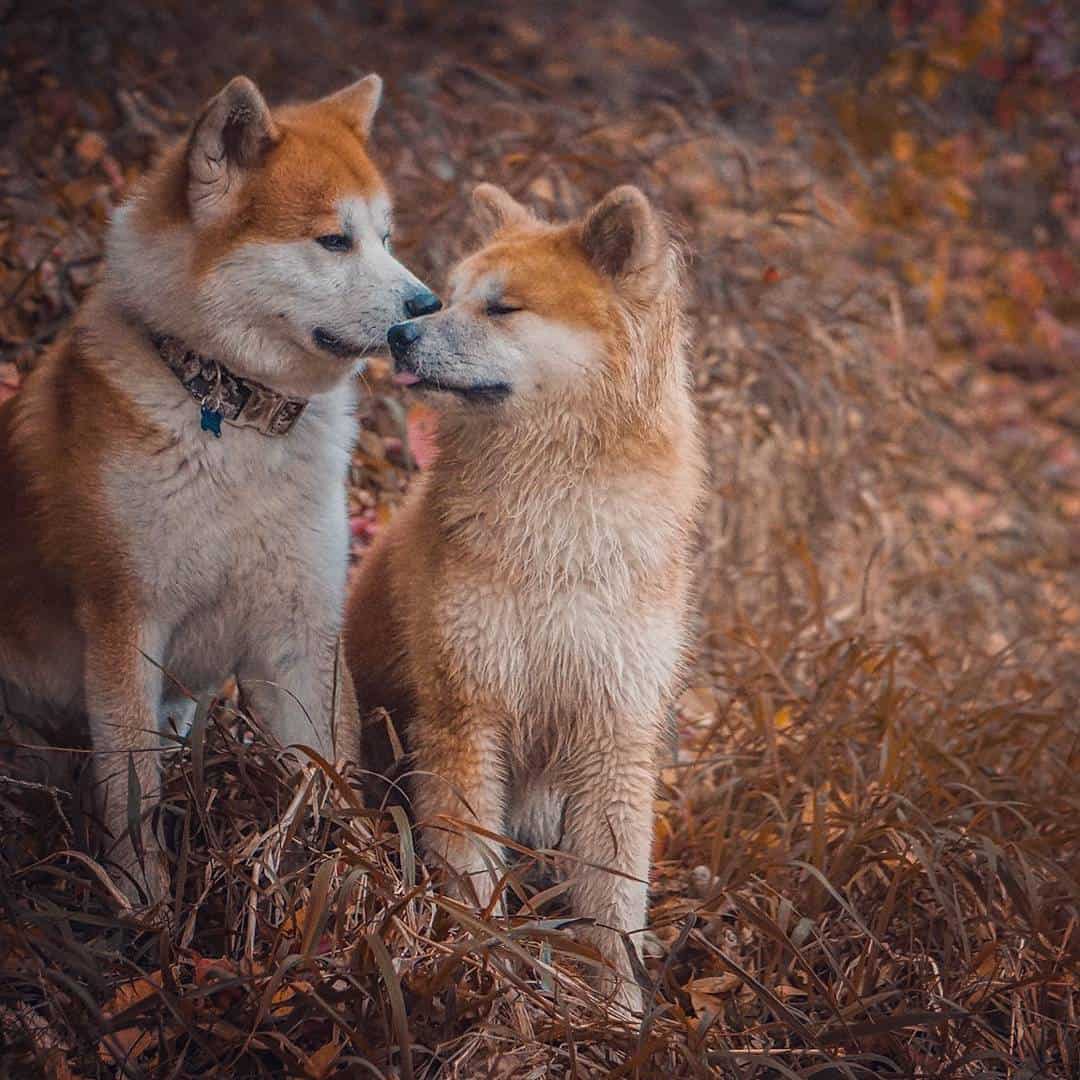
Photo from: @bishuji_the_longcoat_akita
Black Masked Red
Akitas with this red color have a rich hue that is brilliant and clear. They have a white spot on the neck, on the chest, on the legs, under the belly, and sometimes under the tail.
These white marks are well-balanced. They have a black mask covering the area between the eyes and the nose, including the lips. The undercoat may vary from the outer coat.
Fawn, Black Overlay
These Akitas have black stripes on a fawn background. The pattern includes what we call blue brindles, which can be quite exotic. The background is pale fawn and the stripes are pastel gray-blue.
This kind of Akita is quite rare.
Silver, Black Overlay
Some Akitas have black striping and black edging on a silver background. The head is mostly dark grey or even black.
Brown With White Markings
There are Akitas that have a brown overcoat. The brown color should have a deep chocolate hue. If it’s lighter, the color would be considered fawn. White markings on the body are well balanced, and are usually on the chest, stomach, back, and/or front legs and tail.
Golden Fawn
Golden stripes on a fawn background are also common. They have a light fawn basecoat with a deeper overcoat. This gives the Akita a golden shading. Sometimes, they carry a black mask.
Silver Fawn
Silver stripes that are on a very pale fawn background. Those are lovely pastel grey-blue stripes. The head is mostly dark grey or even black. The silver fawn Akita is very rare.
Fawn Brindle
Fawn brindles have black striping on a fawn base, and white markings.
Hooded
The term ‘hooded’ describes a dog that’s predominantly white, but has a secondary color, usually on the head and sometimes on the body. The secondary color has less than one-third of the body in color. Usually, it’s a white body with a colored head and small colored patches on the body.
Long Coat
The long-coat Akita is believed to be the result of breeding the Russian “Karafuto” dog with the Japanese Akita. The point of crossbreeding was to get a dog with a longer and thicker coat that could stand the harsh climates.
This dog is not a “kennel club breed standard”. This means that it can’t be shown, and most likely won’t be bred by registered breeders. The long coat is often described as a teddy bear coat with various colors.
Self Mask Red
The head is the same color as the markings. The red color covers both the body and the head.
Split Mask
Akitas with split masks have a black mask that splits the face in half.
White-Faced Red
A white-faced Akita has a deep, rich reddish tint and tone. As the name says, the face has a white mask and the rest of the body is also white.
Black Brindle
Black brindle is actually a rare coat color. The overcoat appears to be black at first glance, but if you look closer, you’ll notice the dog has at least a few stripes.
Some black brindles are deep black while some are not. There’s usually some shading, or the undercoat is a different color. Most Akitas have shading on the outer or undercoat.
Edging
Edging or etching refers to the lovely black pattern on the edges of colored areas of pinto Akitas or on other markings.
Blue Brindle
When the undercoat is biscuit fawn and the stripes are a pretty pastel greyish blue, those Akitas are named brindle blue. This is a very rare coat look, and it shouldn’t be mistaken with fawn brindle.
Silver Brindle
Silver brindle Akitas have black stripes on a silver background. The difference between a blue brindle and a silver brindle is that a silver brindle has no fawn hue in the undercoat.
Brown Brindle
Brown brindles are black stripes on a solid brown background. The base can sometimes be dark, so the brown appears to be black.
Rare Akita Colors: About The Unique Coat Looks
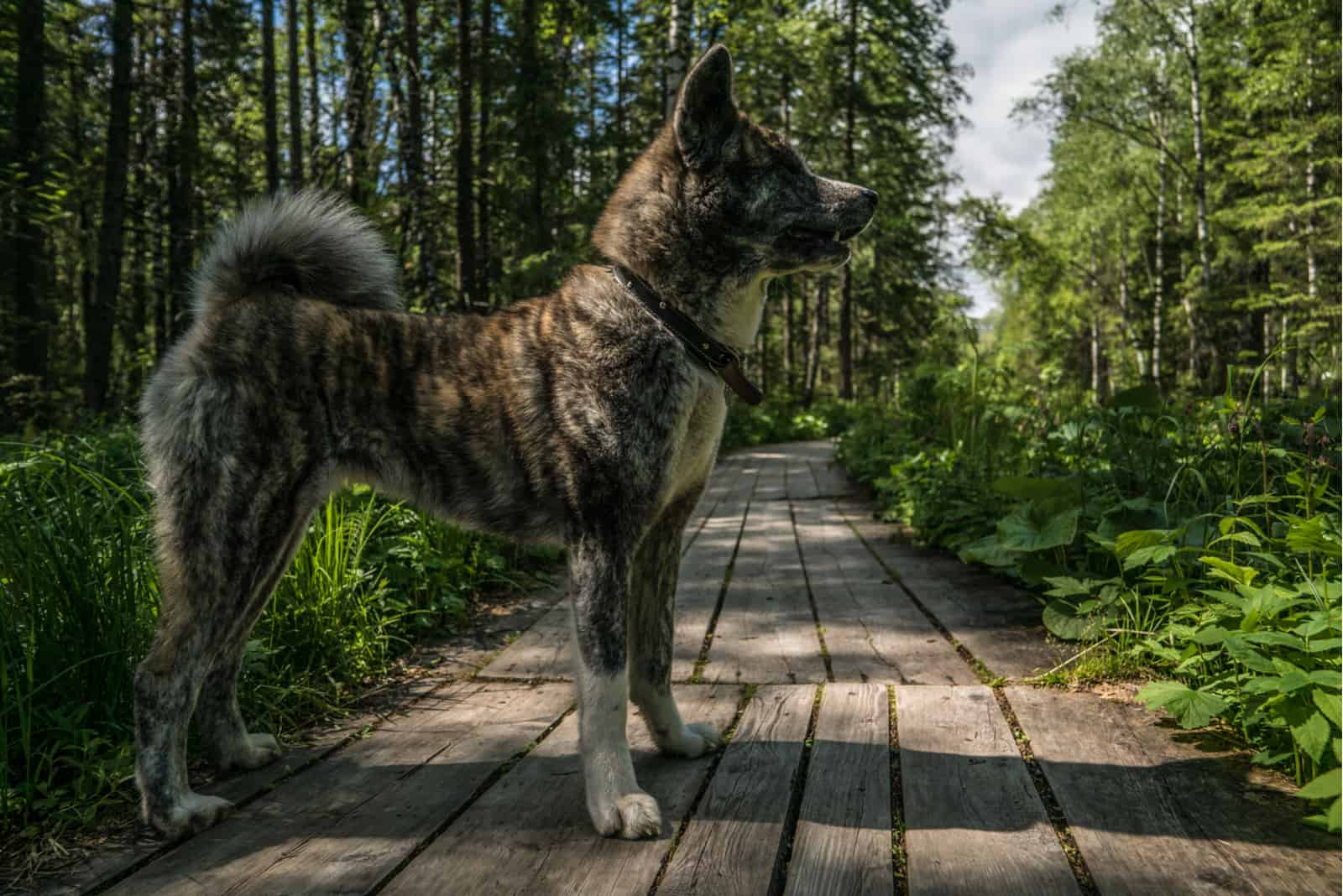
All Akita colors are rich, brilliant, and clear. But, some of them aren’t easy to find at all. Getting one of these Akita babies will require extensive searching and quite a budget for a unique puppy.
If you want your Akita to stand out among all other dogs, then you should look for one of these rare Akita colors:
• Black
• Fawn with black overlay
• Silver fawn
• Black brindle
• Blue brindle
They will be a total hit at the dog park, guaranteed!
Akita Breeders And Puppies
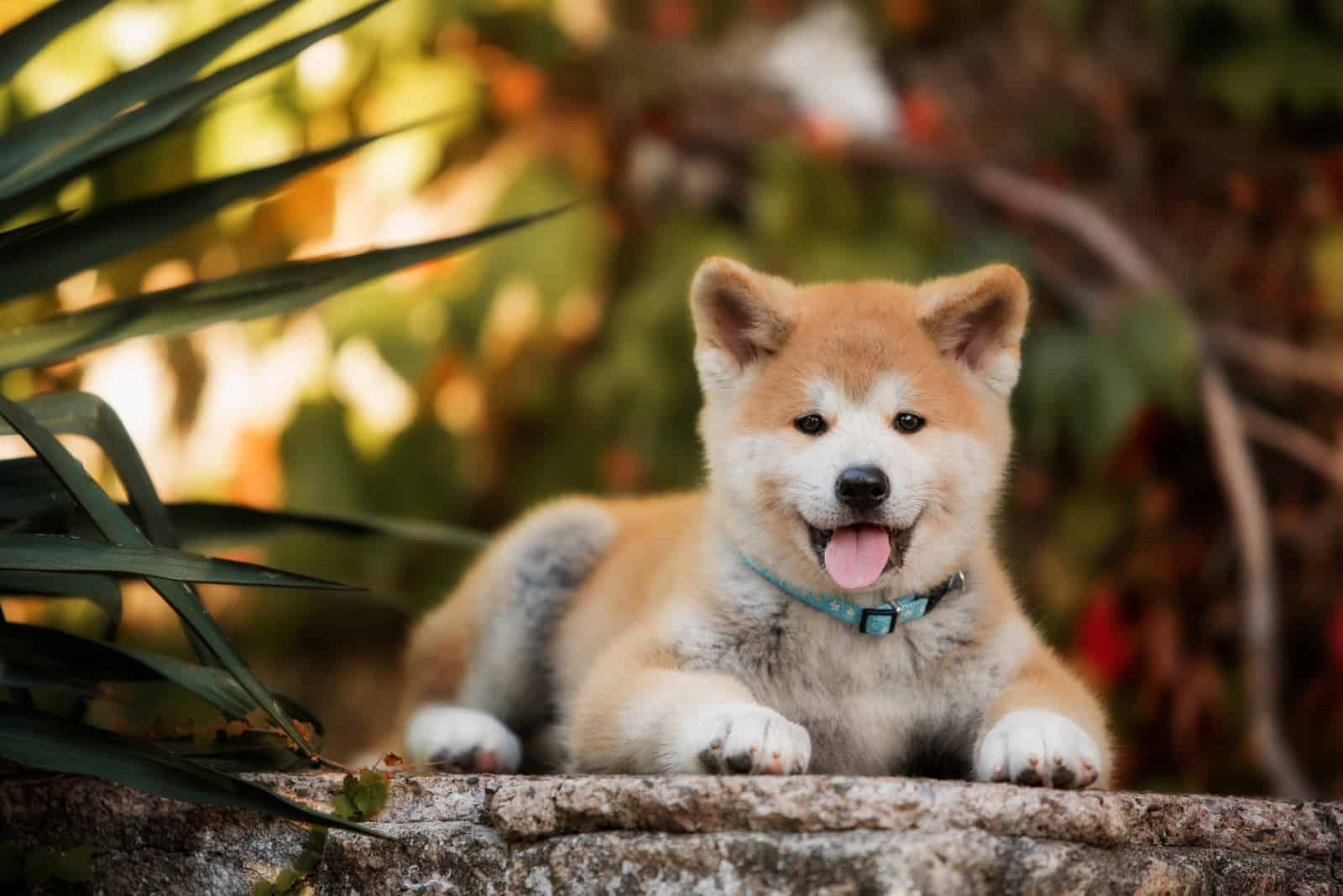
Getting an Akita puppy is a big responsibility that shouldn’t be taken easily.
You should only contact quality breeders and current owners to do thorough research before buying one of these puppies.
You can also contact the Akita Club of America to see if there are any free Akitas waiting for a foster home or a forever home.
Akitas are generally not recommended to first-time owners because of their size and training needs. Also, their temperament can be challenging to some dog owners as they tend to have an independent streak.
Akita puppies are not cheap. Their upbringing is also a bit pricey. You can expect to pay from $750 to $2,000 for an American Akita puppy, depending on the breeder.
However, if the money is tight, looking around in dog shelters may result in rescuing an Akita in need.
Do Akitas Require A Lot Of Grooming?
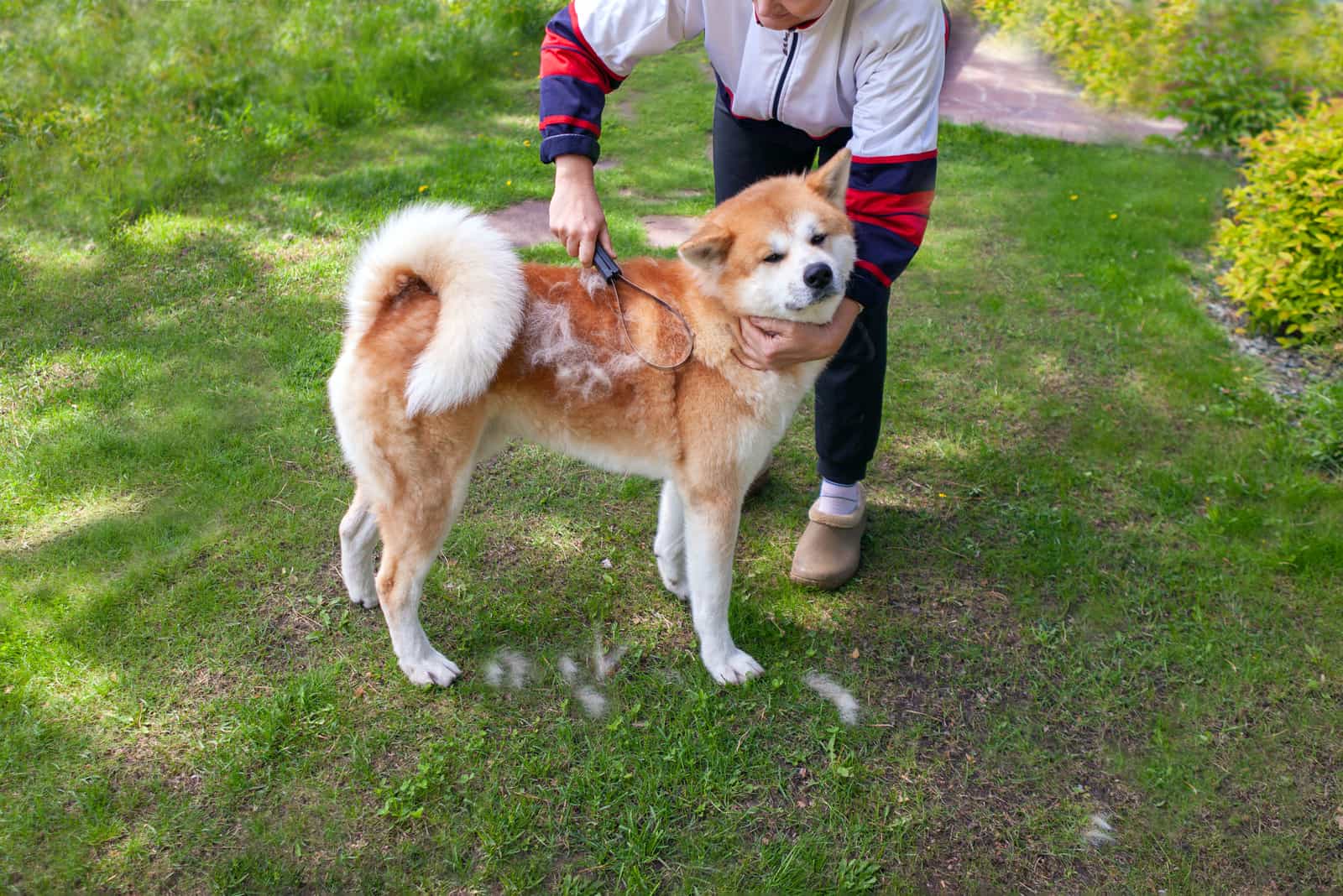
Actually, you’d be surprised to learn that it’s quite easy to groom an Akita, whether it’s a Japanese one or an American one. Frequent baths and brush-outs are a must if you want your dog to have healthy skin and a shiny coat. Only then will your Akita be in top shape. Luckily, weekly brushing and bathing every three months would be just fine.
Do Akitas Shed Or Cause Allergies?
Yes, Akitas do shed quite a bit. You will have to learn how to live with occasional hair all over the place and dust bunnies on the floor. But, if you’re buddies with your vacuum cleaner, you should be able to tolerate it. Also, investing in a robot cleaner might be a great idea.
Is Coat Color Linked To Health Issues?
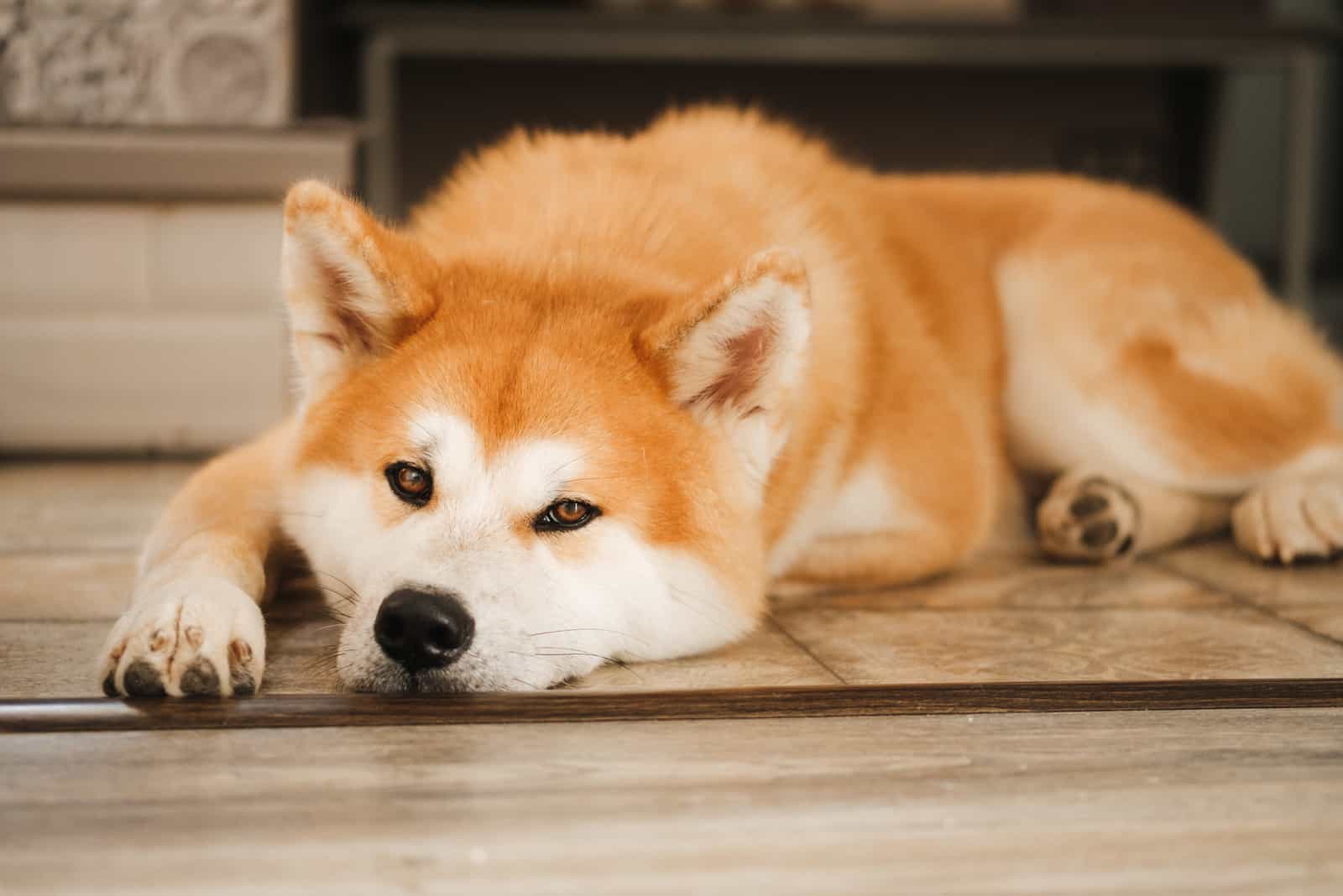
All dogs are prone to developing genetic health issues, especially those that already have genetic mutations like brindling or the merle coat color. However, this doesn’t mean that your Akita will definitely suffer from some health conditions. It’s really a lottery; you never know what your dog might get.
What you can do to ensure that you have a healthy dog is to buy from a good breeder. Avoid so-called Akita breeders who don’t offer health guarantees on puppies, but claim the puppy is 100% healthy. A reputable breeder will be open about the dog’s possible health problems.
The most common health problems in Akitas are hip dysplasia, eye disorders or retinal atrophy, blindness, myasthenia gravis, Von Willebrand’s disease, pemphigus foliaceus, uveodermatologic syndrome, and sebaceous adenitis.
Not all of these conditions are detectable in a growing puppy. However, it’s not impossible to predict whether a puppy will have any of these issues or not.
What responsible breeders need to do is provide independent certification for the parent dogs (grandparents, too) for numerous common defects.
The Akita Club of America participates in the Canine Health Information Center, which is a health database. Before your Akita pup gets a CHIC number, breeders must submit hip evaluations from the Orthopedic Foundation for Animals (OFA) or PennHIP, an OFA thyroid evaluation, along with eye test results from the Canine Eye Registration Foundation (CERF).
All test results, whether they’re positive or negative, must be published in the CHIC database. But, the CHIC number isn’t proof of soundness or absence of disease.
Health issues linked to hip or joint problems, for example, aren’t necessarily because of some genetic predisposition. Every dog can develop them, especially if the dog works out too hard or has an inappropriate diet.
Getting a merle Akita Inu won’t mean you’re getting a sick puppy. A White Akita isn’t blind or deaf, and it’s not an albino. You, as the owner, must ensure that your Akita puppy gets a good diet, enough exercise, mental stimulation, regular checkups, etc.
Different Akita colors are not the reason why you should or shouldn’t get one of these Japanese dogs. It’s genetics and many environmental factors that affect the overall health status.
Should I Get An Akita Dog? Which Of The Akita Colors Is The Best One?
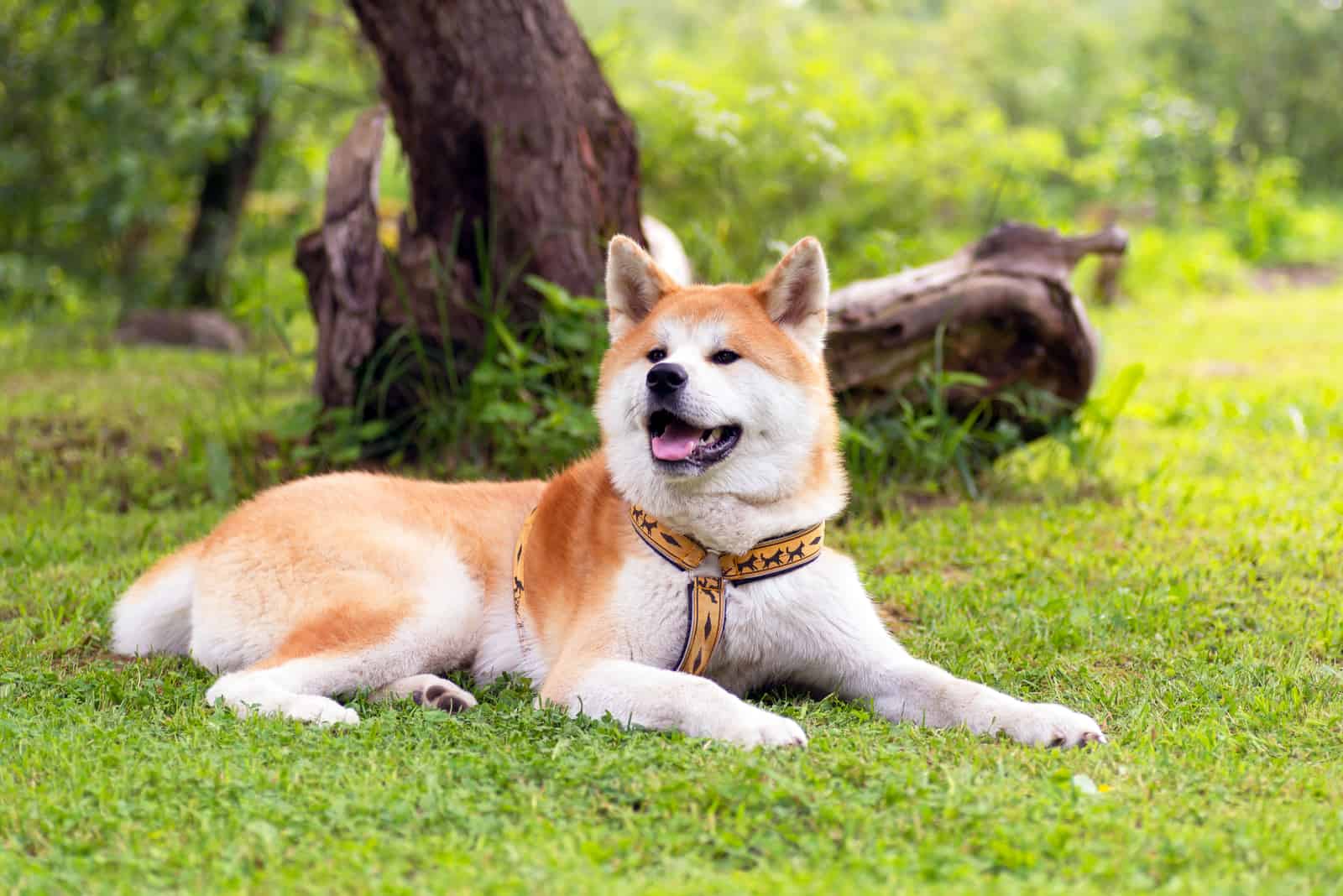
If you’re willing to get a dog that has a strong character, but can be raised to be the loveliest pooch of them all, then you need to get the American or Japanese Akita. These cat-like dogs are much better companions than felines, even though they act alike.
It may be that the Japanese Akita Inu, called Hachiko, has stolen your heart. It may be that you love their cuddly appearance. Or, it may be their strong-willed character. There are many reasons to love Akita dogs.
It’s really easy to love them, but it’s so hard to choose from all these amazing Akita colors! The choice of colors is only up to you. Some people prefer the standard sesame Akita Inu, while others like the more unusual Akita colors, like the merle Akita. Both male and female Akitas are good pups! Either way, it’s inside what counts.
You’ll get an incredibly loyal companion… someone to stick with you through good and bad, and there’s nothing better than that!
Read Next: The Long Haired Akita: A Myth Or Outcasts? Let’s Find Out
